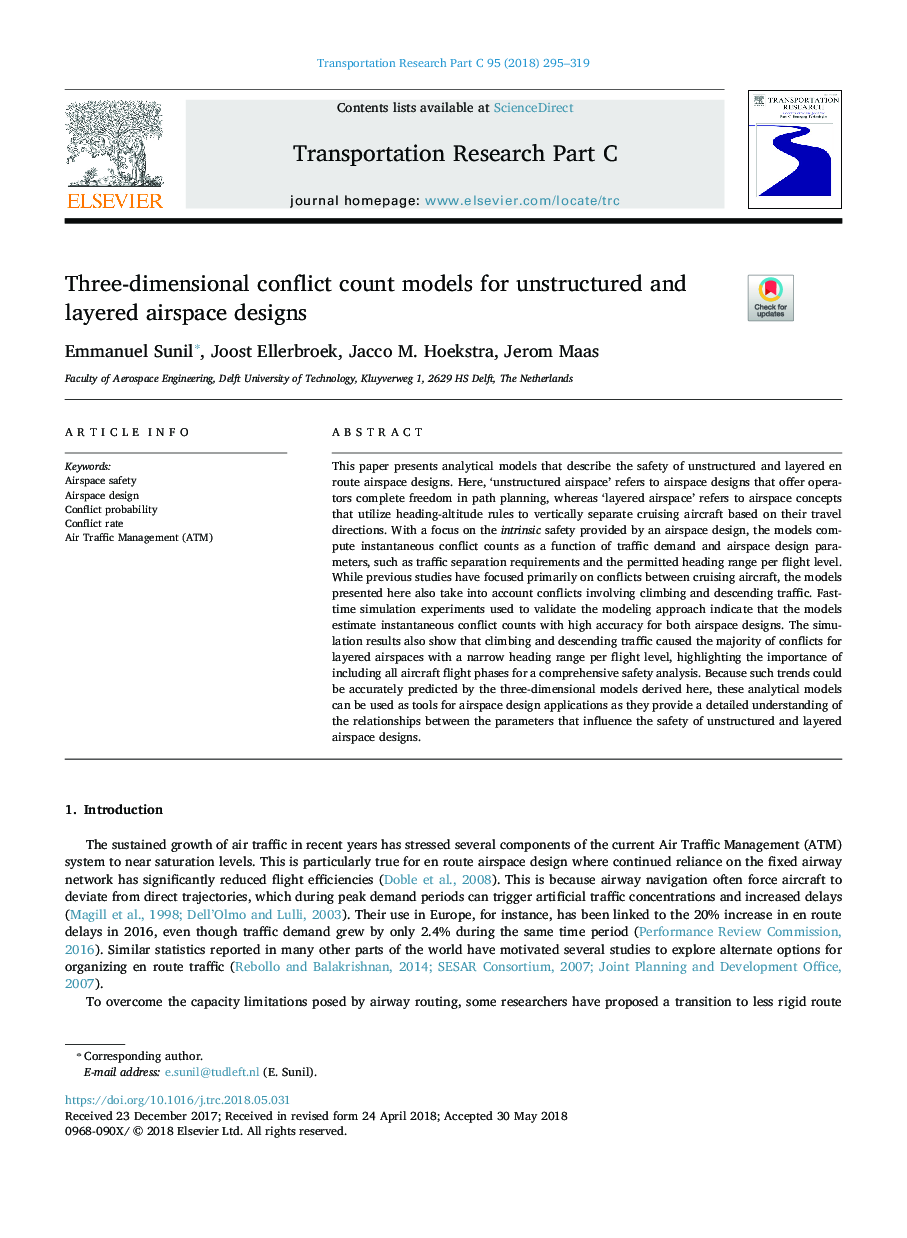| Article ID | Journal | Published Year | Pages | File Type |
|---|---|---|---|---|
| 6935674 | Transportation Research Part C: Emerging Technologies | 2018 | 25 Pages |
Abstract
This paper presents analytical models that describe the safety of unstructured and layered en route airspace designs. Here, 'unstructured airspace' refers to airspace designs that offer operators complete freedom in path planning, whereas 'layered airspace' refers to airspace concepts that utilize heading-altitude rules to vertically separate cruising aircraft based on their travel directions. With a focus on the intrinsic safety provided by an airspace design, the models compute instantaneous conflict counts as a function of traffic demand and airspace design parameters, such as traffic separation requirements and the permitted heading range per flight level. While previous studies have focused primarily on conflicts between cruising aircraft, the models presented here also take into account conflicts involving climbing and descending traffic. Fast-time simulation experiments used to validate the modeling approach indicate that the models estimate instantaneous conflict counts with high accuracy for both airspace designs. The simulation results also show that climbing and descending traffic caused the majority of conflicts for layered airspaces with a narrow heading range per flight level, highlighting the importance of including all aircraft flight phases for a comprehensive safety analysis. Because such trends could be accurately predicted by the three-dimensional models derived here, these analytical models can be used as tools for airspace design applications as they provide a detailed understanding of the relationships between the parameters that influence the safety of unstructured and layered airspace designs.
Keywords
Related Topics
Physical Sciences and Engineering
Computer Science
Computer Science Applications
Authors
Emmanuel Sunil, Joost Ellerbroek, Jacco M. Hoekstra, Jerom Maas,
